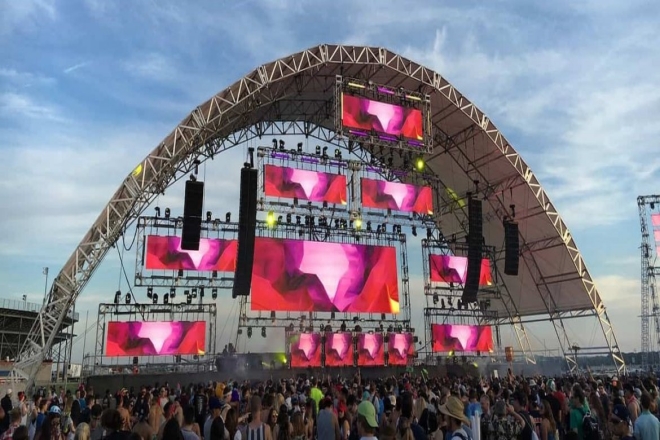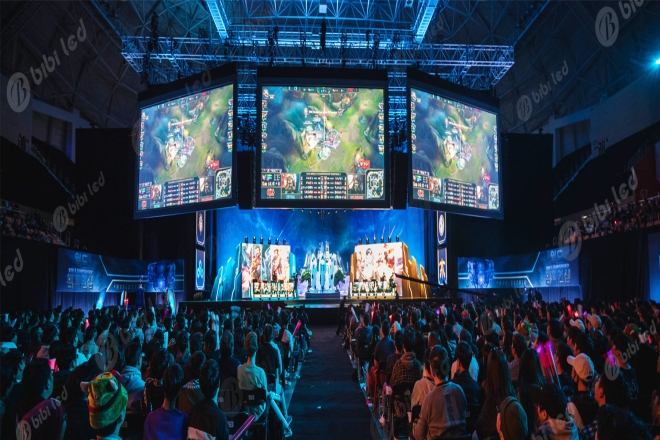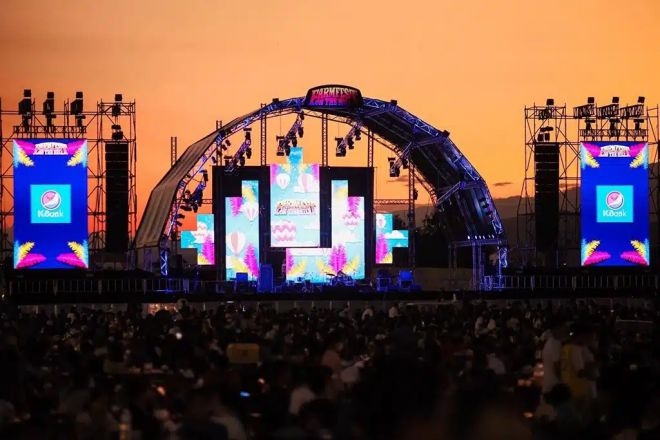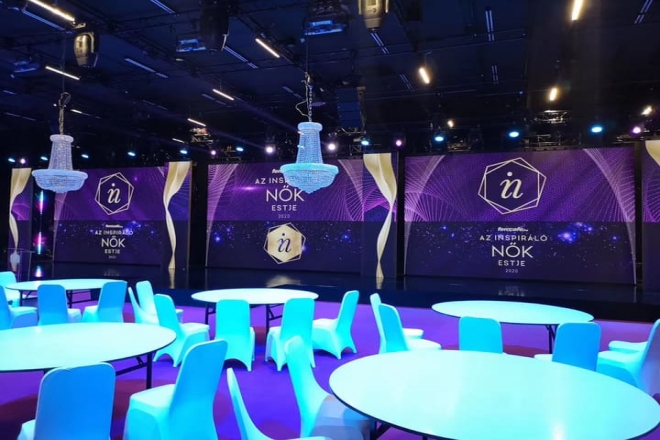序章

In the digital age, the way information is transmitted is undergoing a revolution. As the pioneer of this revolution, the multi-screen linkage technology of LED表示画面 is particularly eye-catching. It not only changes the way we display information, but also enhances the visual experience of the audience.
This article will take you to explore how the multi-screen linkage technology of LED display screens has become the backbone of modern visual display, and how it can create a shocking visual feast by seamlessly integrating multiple display interfaces.
1. Multi-screen linkage technology, simply put
Multi-screen linkage is like multiple TV or mobile phone screens at home that can work together to play the same or different content.
On LED display screens, this technology allows multiple large screens to “hand in hand” and show wonderful content together, bringing shocking visual effects to the audience.
Imagine that you see a super large LED screen in a shopping mall, but it is actually composed of several small screens. These screens can play advertisements or activity pictures synchronously through a kind of “magic,” just like a complete screen. This is the charm of multi-screen linkage!
1). Implementation of multi-screen linkage technology
- Wired connection:
Just like we use wires to connect TVs and computers, multi-screen linkage can also use special wires to connect multiple LED screens.
This method is relatively stable, just like you use a network cable to connect your computer to the Internet at home, and it rarely drops the line. However, if the distance between the screens is far or the venue is not convenient for wiring, it will be a bit troublesome.
- Wireless connection:
Just like we use Wi-Fi to access the Internet, multi-screen linkage can also be achieved through wireless networks.
This method does not require pulling wires and is very convenient. However, if the network signal is not good or there are too many screens causing network congestion, there may be freezes or delays.
- Implementation method:
First, determine whether to use a wired or wireless connection. Then, install a special multi-screen linkage software or system, which is like a “commander” that can tell each screen what content to display.
Next, upload the prepared content (such as videos, pictures, text, etc.) to the system. Finally, through the control of the software, multiple screens can start to link up and show wonderful content to the audience.
2. Three major benefits of multi-screen linkage

1). Visual impact, shocking
Imagine that you are watching a concert, and the big screen on the ステージ is not just a single piece, but several large screens are connected together to form a super large picture. When the singer performs on the stage, the shocking visual effect is simply suffocating!
This is the visual impact brought by multi-screen linkage. It can make the picture larger and clearer, making the audience feel as if they are in the scene and feel a more real scene.
2). Information transmission, as fast as lightning
Another very practical benefit of multi-screen linkage is that information transmission is very fast. For example, at a press conference, the host just finished a sentence, and the content on the big screen was updated. In this way, the audience can see the latest information immediately without waiting.
In shopping malls, if merchants use multi-screen linkage to display promotional information, customers can learn about the discount activities for the first time, increasing the impulse to buy.
3). Unlimited creativity, do whatever you want
Multi-screen linkage also provides unlimited possibilities for creative display. Designers can combine multiple screens into different shapes and layouts as needed to create unique visual effects.
For example, at an exhibition, multi-screen linkage can be used to display multiple angles and details of a product, allowing the audience to understand the product in all aspects.
Or, at the wedding scene, use multi-screen linkage to play the sweet photos and videos of the newlyweds to create a romantic and warm atmosphere. In short, multi-screen linkage makes creative displays more diverse and personalized.
3. The implementation technology of multi-screen linkage, in plain words
1). Hardware requirements
To realize multi-screen linkage, we must first have a suitable LED display, just like a puzzle needs to have a suitable puzzle piece. These displays must have a certain “picture quality”; that is, the resolution must be high so that the picture is clear.
The brightness must also be sufficient. Otherwise, it will not be clear under the sun. The color must also be accurate. Otherwise, the red will turn into pink, and the green will turn into blue, which will be a mess.
In addition, these displays must be able to “fit together,” just like puzzle pieces must be able to fit together. The borders between them must be narrow, and the gaps must be small so that the large screen that is assembled looks like a whole piece.
In addition, they must be able to “talk” to the control device; that is, the interface must be compatible, and the signal must be able to be transmitted.
Of course, there must be a “commander” – the controller, to tell each display what to display. This commander must be smart and handle things quickly; otherwise, the screen will get stuck or messed up.
2). Software support
Software is like a “language” for giving commands to these displays and controllers.
First, there must be software that allows multiple displays to display the same thing at the same time or to display different but related things. This is the multi-screen synchronization and split-screen display function.
Then, if we want the audience to interact with the screen, such as changing the content with a finger, there must be a software that can receive this interactive signal and tell the screen to respond accordingly.
In addition, in order to facilitate managers to watch these displays remotely, there must be a management system. This system allows managers to see the screen situation no matter where they are, and can also adjust the picture and update the content.
Moreover, in order to prevent others from tampering, this system can also set different permission levels, just like the door locks at home have different keys.
Finally, if these displays are used for business, such as advertising screens in ショッピングモール, the management system can also help us analyze which content is more attractive and which time periods have the most people watching so that we can better arrange advertisements.
4. Application scenarios of multi-screen linkage, in plain words
1). Commercial Advertisements
In commercial advertisements, the multi-screen linkage is like a magic trick that can make advertisements super attractive. Imagine that you are walking in a shopping mall and suddenly see a whole wall playing the same advertisement, and the picture is large and clear.
You will definitely take a few more glances, right? This is the charm of multi-screen linkage. It can combine multiple small screens into a large screen, making the advertisement look more shocking and interesting. Moreover, some advertisements can interact with you, such as you can get coupons by touching the screen. Who doesn’t like such advertisements?

2). Entertainment Performances
When watching concerts or stage plays, multi-screen linkage can make the ステージ effect better! For example, when the singer sings, the large screen behind him is like an oversized MV, changing the picture with the song, making you feel like watching a movie.
Sometimes, the large screen will also display the audience’s expressions or interactive information, making the actors and the audience closer. Such a performance is simply a feast of vision and hearing!

3). Conferences and 展示会
Multi-screen linkage is also very practical when holding meetings or exhibitions. For example, when holding meetings, you can combine multiple small screens into a large screen so that everyone can see more clearly.
Moreover, if you need to display multiple PPTs or video materials, multi-screen linkage can also make them appear on the screen at the same time without the trouble of switching back and forth.
At the exhibition, multi-screen linkage can display more exhibit information and company introductions so that the audience can have a more comprehensive understanding of the exhibition content. At the same time, it can also enhance the audience’s visiting experience and make the exhibition more interesting and vivid.
結論
The multi-screen linkage technology of LED display screens has shown great potential and value in many fields, such as commercial advertising, entertainment performances, conferences, and exhibitions, with its unique display effect and efficient information transmission ability.
With the continuous advancement and innovation of technology, we can foresee that multi-screen linkage technology will play a more important role in future visual displays, bringing richer and more shocking visual experiences to the audience.
Let us wait and see how this technology will continue to push the boundaries of display technology and create more possibilities.
最後に、LEDディスプレイスクリーンについてさらに詳しく知りたい場合は、 ご連絡ください。
